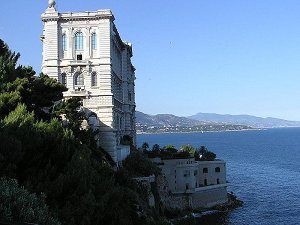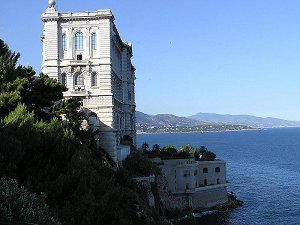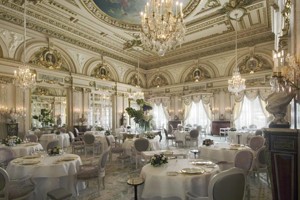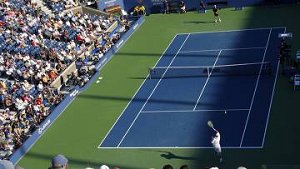The best museum of Monaco (part 2)
 After the death of Albert I, the museum went dead, because the sea was not at all interested in the new owner of the rock of Monaco. Inflation, which swept Europe after the First World War, devalued the amounts allocated by Albert to support the Museum and implement research programs. The scientific laboratories were empty, the Yrondel II yacht was sold and effectively blown up during filming.
After the death of Albert I, the museum went dead, because the sea was not at all interested in the new owner of the rock of Monaco. Inflation, which swept Europe after the First World War, devalued the amounts allocated by Albert to support the Museum and implement research programs. The scientific laboratories were empty, the Yrondel II yacht was sold and effectively blown up during filming.
A new world war and a new post-war round of inflation put the museum on the brink of closure. After the war, tourism made a miracle: the Oceanographic Museum became the only scientific institution in the world that could exist entirely on the funds received from the sale of tickets.
It was at this time that the museum’s international committee, wishing to improve its activity, invited the director of the French naval forces, ocean scientist and scuba inventor J.-I. Cousteau. The museum, shaking itself from hibernation, found a second wind. Cousteau and his like-minded assistants, reviving the traditions of Prince Albert, developed and began to successfully implement the multi-year plan for the development of the museum.
To attract more visitors, it was necessary to improve and expand the Aquarium, improve the work of one of the largest marine-related libraries, replenish the staff with the right people, radically restructure the research departments, and acquire the necessary modern equipment. Albert’s grandson, Prince Rainier III, who came to power in the principality, inherited his love of the sea from his grandfather and supported the initiatives of the new director. The young ruler, being the honorary chairman of the Oceanographic Institute, even headed a specially created radioactivity laboratory for him, and then the International Center for the Study of Radioactivity of the Sea, organized at the museum. The natural picture of underwater life was recreated. A tropical marinarium park was built just below the museum in the open air, and an underwater fish farm under the rock.
The museum began to carry out huge work to popularize and promote ideas related to the protection of the seas, oceans and the environment from all kinds of pollution, burial at the bottom of radioactive waste, to hold international meetings and scientific symposia. Due solely to the position taken by the museum and the authority of its director, it was possible to prevent and prohibit the dumping of radioactive waste in the Mediterranean, which was outlined by the French government program. We can say that it was from here that the first sprouts of the famous Greenpeace movement went.
How pleasant it is to find yourself under the cool museum vaults after the street heat and, without rushing, rise from floor to floor, linger at the first, barrel-like wooden submarine, manipulate with levers or look into the periscope; to see a Russian-made diving suit – there is also a new, modern set of underwater equipment, but, alas, it is no longer ours!
The Hall of the Whale in the Oceanographic Museum in Monaco In a special auditorium, the curious are shown and immediately commented on the life of the smallest monsters – plankton. For this, live crustaceans in cuvettes, a microscope and unusual teleprojection equipment are used. And in the hall opposite – giant skeletons of whales, which can be seen in their entirety, only by moving a certain distance.
All the seas of the globe are represented in it, but only the tropical fauna is distinguished by an abundance of exotic flowers. There you can see the living coral reef of the Red Sea, the only sea in the world in the water of which corals develop in a confined space. A giant reef recreated in a life-size aquarium and giving visitors a sense of the real sea. Daylight contributes to the growth of living corals brought to Monaco from Vietnam. In the aquarium, you can see more than 500 different marine life, including sharks.
The Whale Hall is a rich collection of stuffed marine animals and their skeletons. And finally, from the terrace of the museum you can enjoy a unique panorama of the coast.
The greatest interest of visitors is caused by the department of the Aquarium, where one of the richest and most beautiful collections of marine organisms in the world is represented. In its windows you can watch the most incredible views representing all the seas of the globe. Such, for example, Tetrodons from the island of Ceylon and Demoiselle from the Philippine Islands and from the Red Sea. Some of these species adapt perfectly to captive life: one spiky-headed fish lived twenty-five years.




